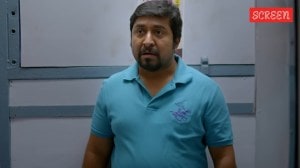Indian cos missing out on significant savings: Study
A survey conducted by American Express Consulting demonstrates that the rapid revenue growth of Indian companies seen over the last decade has been matched by a corresponding increase in business related travel expenditure.

A survey conducted by American Express Consulting demonstrates that the rapid revenue growth of Indian companies seen over the last decade has been matched by a corresponding increase in business related travel expenditure.
The survey goes on to highlight opportunities for Indian companies to leverage this increased spend to negotiate improved discounts with key suppliers.
“The survey demonstrates two important themes”, commented Firdaus Mogul, Head of American Express Commercial Card, India. “Firstly, the Expense Management strategies of Indian companies have evolved significantly since 2001, with business leaders increasingly recognising the importance of controlling their T&E expense. Secondly, this evolution needs to continue further if Indian companies are to match the savings generated by their global peers”.
The report surveyed 114 companies across India. The responses of these companies were then benchmarked against strategies employed by Corporations in the United States and Europe, to evaluate performance versus global best practice.
During the survey, 74% of Indian respondents indicated that their T&E spend had now increased to more than Rs. 1 Crore per year, compared to an average of only Rs. 17 lakhs in 2001. This trend looks set to continue, with 91% of Indian companies forecasting increasing T&E expenses in 2008 – with half forecasting increases in excess of 25%.
“High levels of T&E expense are a relatively new phenomenon in India and Indian companies have yet to fully exploit the significant economies of scale available through consolidated bargaining with key suppliers”, commented Prashant Aggarwal, Head of American Express Consulting, Japan and Asia Pacific.
“Supplier’s will always negotiate with regular customers, but only if the customer can demonstrate consistent buyer behaviour. The use of multiple payment methods such as cash advance, invoice and personal card limit Indian company’s ability to demonstrate this behaviour, resulting in increased expenses for the business”.
Key findings
1) Of the companies surveyed, 36% stated that an increase in overall T&E costs was the main factor driving their desire to improve their expense management processes. This is in stark contrast to global companies who have as their primary focus on improving compliance with policy.
2) 79% of companies use Corporate Card as payment method, up from 33% in 2001; of these, 41% adopt the best practice of mandating use of the Card for all chargeable business expenses and have streamlined their back-end accounting processes by shifting away from other payment methods such as cash advances, personal cards and direct invoicing which prevents companies from receiving full supplier spend visibility and resulting negotiating opportunities
3) Two T&E spending categories – air travel and hotels – account for more than 70% of total T&E expenditure.
4) Air travel is now an increasingly important cost to Indian companies. Costs related to air travel now accounts for 42% of T&E expenses, an increase of 10% since 2001. This trend contrasts starkly with the reduction in the proportion attributable to non-air travel, which has fallen from 21% in 2001 to just 13%.
5) The proportion of spend on hotel within travel costs has also risen dramatically, almost doubling over the past six years. At 29% of total T&E expenditure, spend on hotel now ranks as the second largest category in corporate travel expenditure after air travel for Indian companies. Hotel expenses across India are set to rise significantly (as much as 40% in some cities) over the next year – outpacing other A-PAC markets. This will further add to mushrooming T&E spends.
6) Air travel is displacing other travel options in India and now accounts for more than 42% of T&E expense. With Air expense accounting for almost half the total T&E spend, corporate have a great opportunity to consolidate suppliers and negotiate greater savings.
7) Only 34% companies surveyed adopt the best practice of mandating the use a single designated travel agency to make all their bookings. Besides taking advantage of ensuring preferred supplier rates, it critical for companies to follow this practice to ensure they know where their travelers are in times of crises and are able to locate their whereabouts.
8) 80% of companies in India opt for costly administrative procedure for expense reporting and processing. The average total cost of processing a single T&E claims for companies in India is Rs. 505, which can be reduced to Rs. 85 by implementing “Expense management software”.
Recommendations
Global best practice companies employ a 5 stage approach to maximise T&E savings:
1) Set Travel Management goals by assessing the relative priority of cost containment, traveller safety, employee needs and administrative efficiency
2) Designate a Travel Manager who will develop and monitor implementation of travel policy, negotiate with vendors, administer corporate card program and control travel budget
3) Use Management Information system reports to help identify traveler’s needs, analyse travel patterns, identify key suppliers, negotiate corporate rates and monitor policy compliance. Corporate Card data also gives a clearer picture of the scope of itemized spending savings. Leveraging consolidated corporate card data alone can drive procurement savings of 7.2% of total T&E spend.
4) Develop an effective written travel policy covering travel arrangements, all elements of T&E expenditure, payment methods, expense processing and documentation requirements. Travel policy must be effectively communicated and distributed to those who use it and those who can help implement it.
5) Consolidate travel purchasing through a single travel agency, which can help implement and monitor travel policy, improve T&E budgets and forecasts and increase leverage in negotiations with suppliers. Use consolidated travel information and buying power to negotiate for favorable corporate rates and enforce the use of the single travel agency and corporate rates program to realise savings.
6) There is no point negotiating discounts if travelers do not use the preferred suppliers. Ensure compliance of the travel policy and turn these discounts into savings.
7) Adopt and enforce a Corporate Card program to improve visibility of spend and minimize costs for expenses processing. Eliminate use of other administratively costly payment methods such as individual invoices and cash advances.
8) Quantify the success of these strategies by establishing robust supplier level compliance reporting designed to measure adherence to policy
9) Reduce the pressure on your finance team, by implanting an automated Expense Management System.





- 01
- 02
- 03
- 04
- 05


























